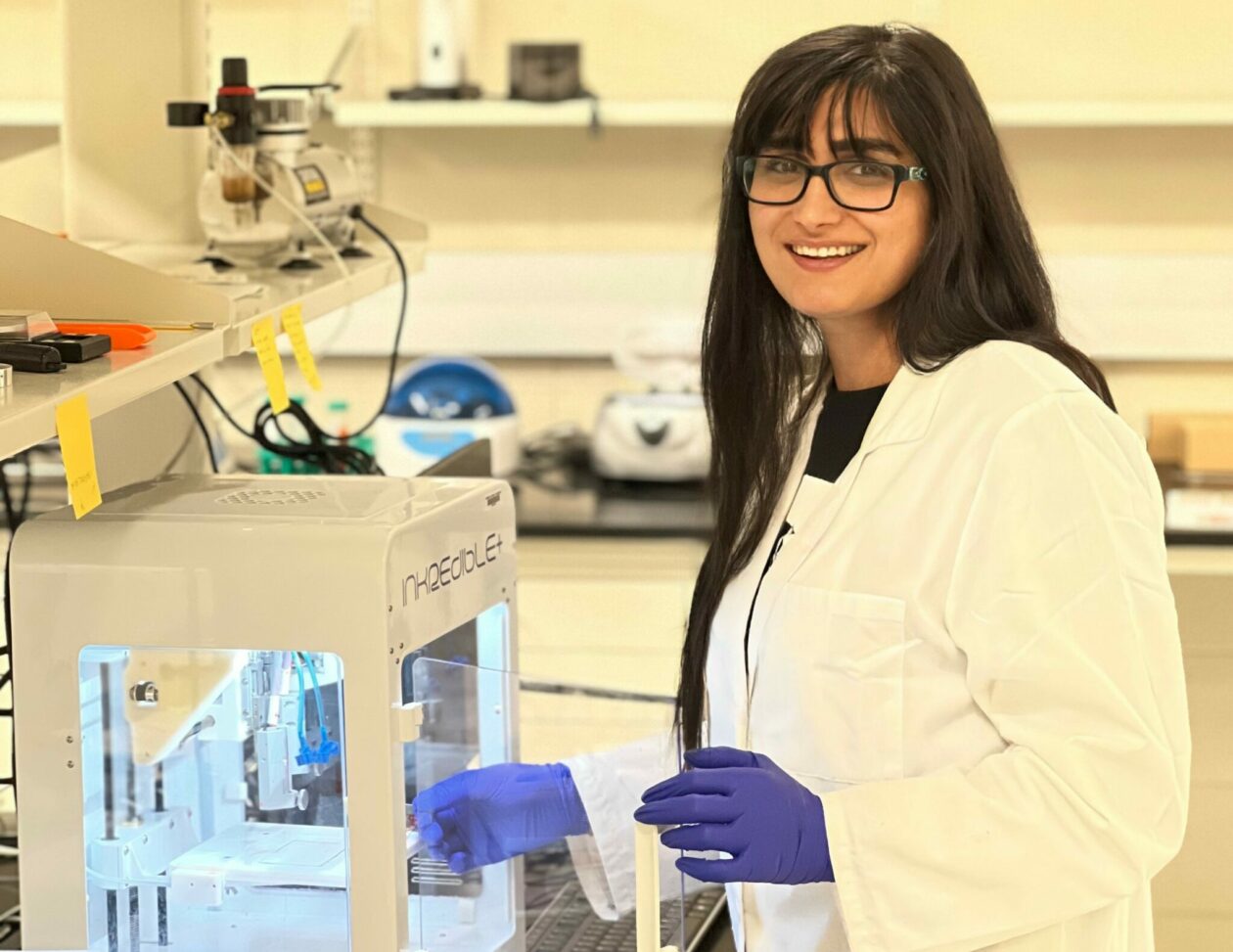S&T researchers developing new dressings for better wound care
Posted by Greg Edwards

Dr. Fateme Fayyazbakhsh, shown in a laboratory at Missouri S&T, aims to develop more effective dressings for patients with second-degree burns. Photo by Lev Suliandziga.
Missouri S&T researchers are developing new 3D-printed hydrogel dressings to speed up and improve the healing process for patients with second-degree burns.
“We have developed dressings with bioactive formulations to better address issues that patients with burn injuries regularly face,” says Dr. Fateme Fayyazbakhsh, an assistant research professor of mechanical engineering at S&T and the project’s lead researcher. “The continuous hydration provided by these dressings, along with their non-adhesive and porous texture, show great promise in promoting moist wound healing, reducing pain caused by atraumatic dressing removal, and minimizing scar tissue formation.”
Each year, approximately 1.1 million Americans suffer from burn injuries that require acute medical attention and can experience several issues throughout the healing process, according to American Burn Association.
The research team published an article covering their latest findings in the International Journal of Bioprinting in July.
Hydrogels are typically part of the care regimen for patients with severe burns, but what separates S&T’s research from standard hydrogels is that the team is focusing on precisely 3D printing dressings that also include bioactive borate glass.
The innovative use of glass for health care procedures was pioneered at S&T in the 1980s by Dr. Delbert Day, Curators Professor Emeritus in materials science and engineering and a fellow of the National Academy of Inventors. Day is also on the research team for this project.
By 3D printing the dressings and including the glass, the researchers can better control the release of water from the dressing. Instead of coming in bursts, the water is paced out continuously over the course of 10 days, which means the dressing should stay effective on the wound for a longer time.
In a study using a murine model, researchers observed that the 3D-printed dressings led to faster wound closures, less scarring, non-adhesive contact of the dressing and easier dressing removal.
Fayyazbakhsh says the next steps for this research are to continue refining and improving the dressing, while also demonstrating its viability as a treatment option and considering its long-term efficacy. She says the eventual goal is to hold clinical trials with patients and then commercialize the treatment.
“We are making great strides toward one day having the dressings commercialized and providing better treatment for burn patients,” Fayyazbakhsh says.
Dr. Ming Leu, the Keith and Pat Bailey Distinguished Professor of mechanical engineering at Missouri S&T, is the principal investigator of this project.
Other researchers for the project include Michael J. Khayat, who earned a bachelor’s degree in ceramic engineering from S&T in 2021 and is now a Ph.D. student at McGill University; Candy Sadler, an adult geriatric nurse practitioner at the Phelps Health Wound Ostomy Center; and Dr. Yue-Wern Huang, professor of biological sciences and associate dean for research and external relations in the College of Arts, Sciences, and Education at S&T.
About Missouri S&T
Missouri University of Science and Technology (Missouri S&T) is a STEM-focused research university of over 7,000 students. Part of the four-campus University of Missouri System and located in Rolla, Missouri, Missouri S&T offers 101 degrees in 40 areas of study and is among the nation’s top 10 universities for return on investment, according to Business Insider. For more information about Missouri S&T, visit www.mst.edu.
Our daughter had a terrible wound and used hydrogel pads for months. Anything done to make this wound healing bandage even better is great. I wish you all the best in your work. Please keep us posted.